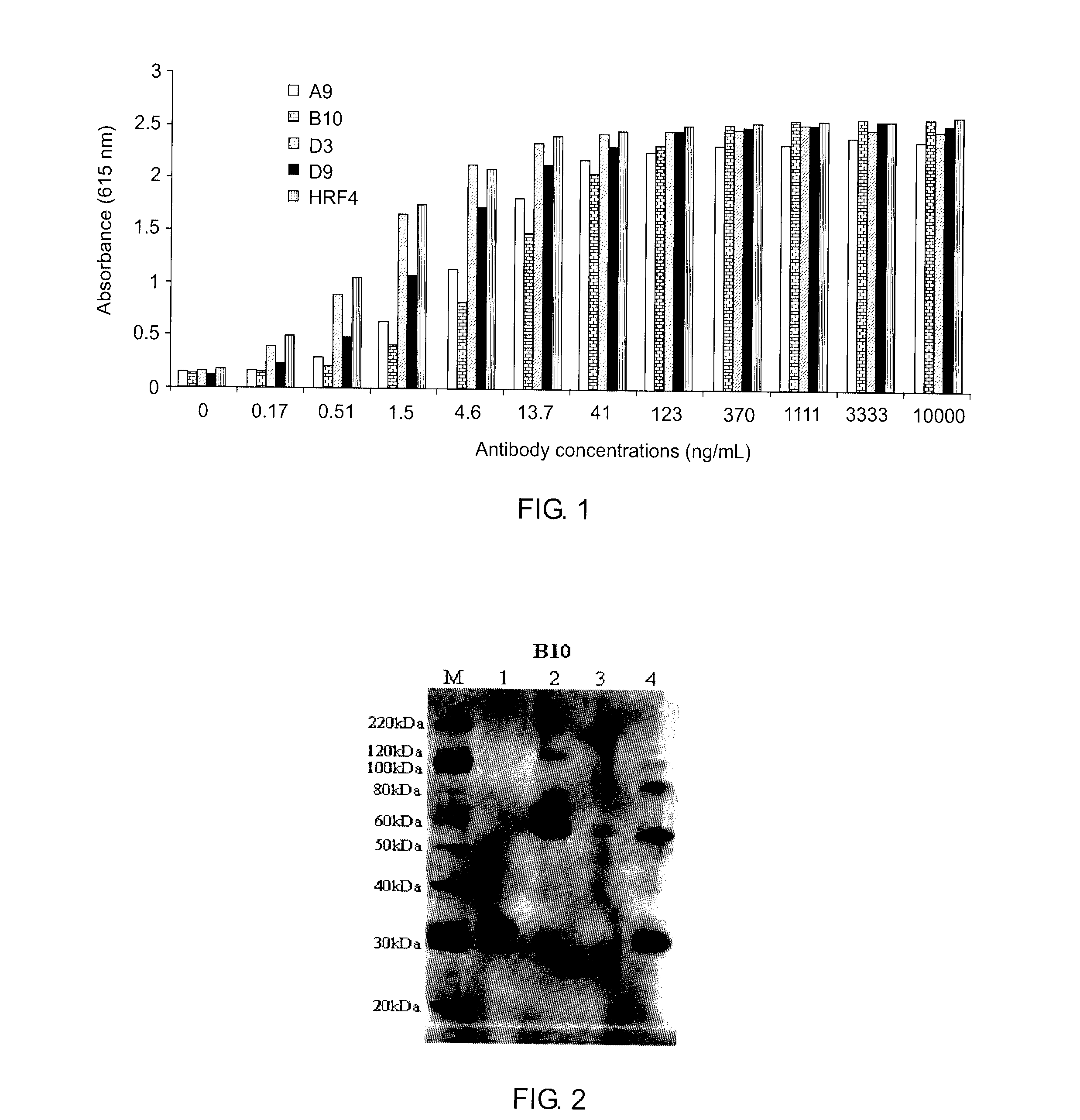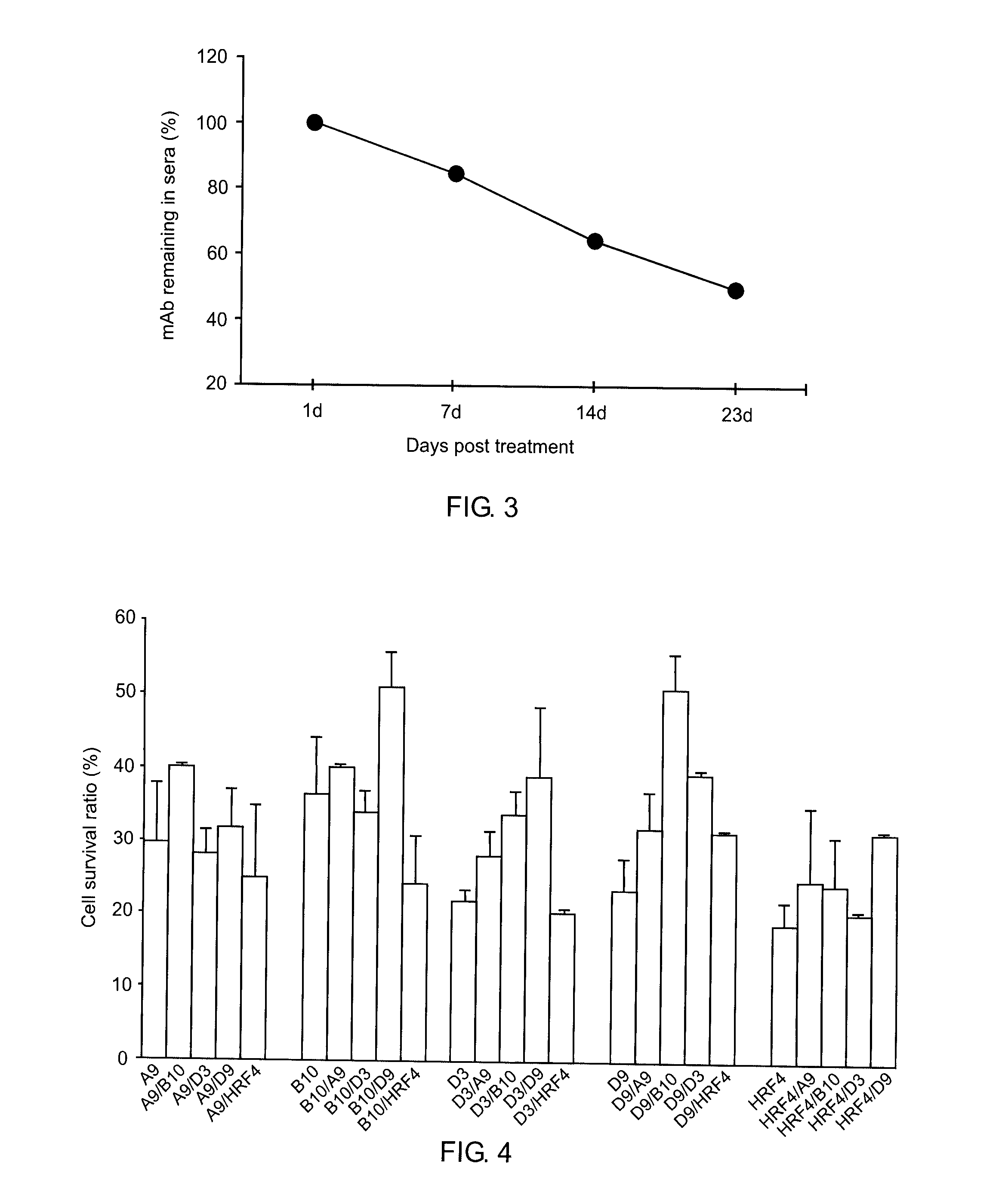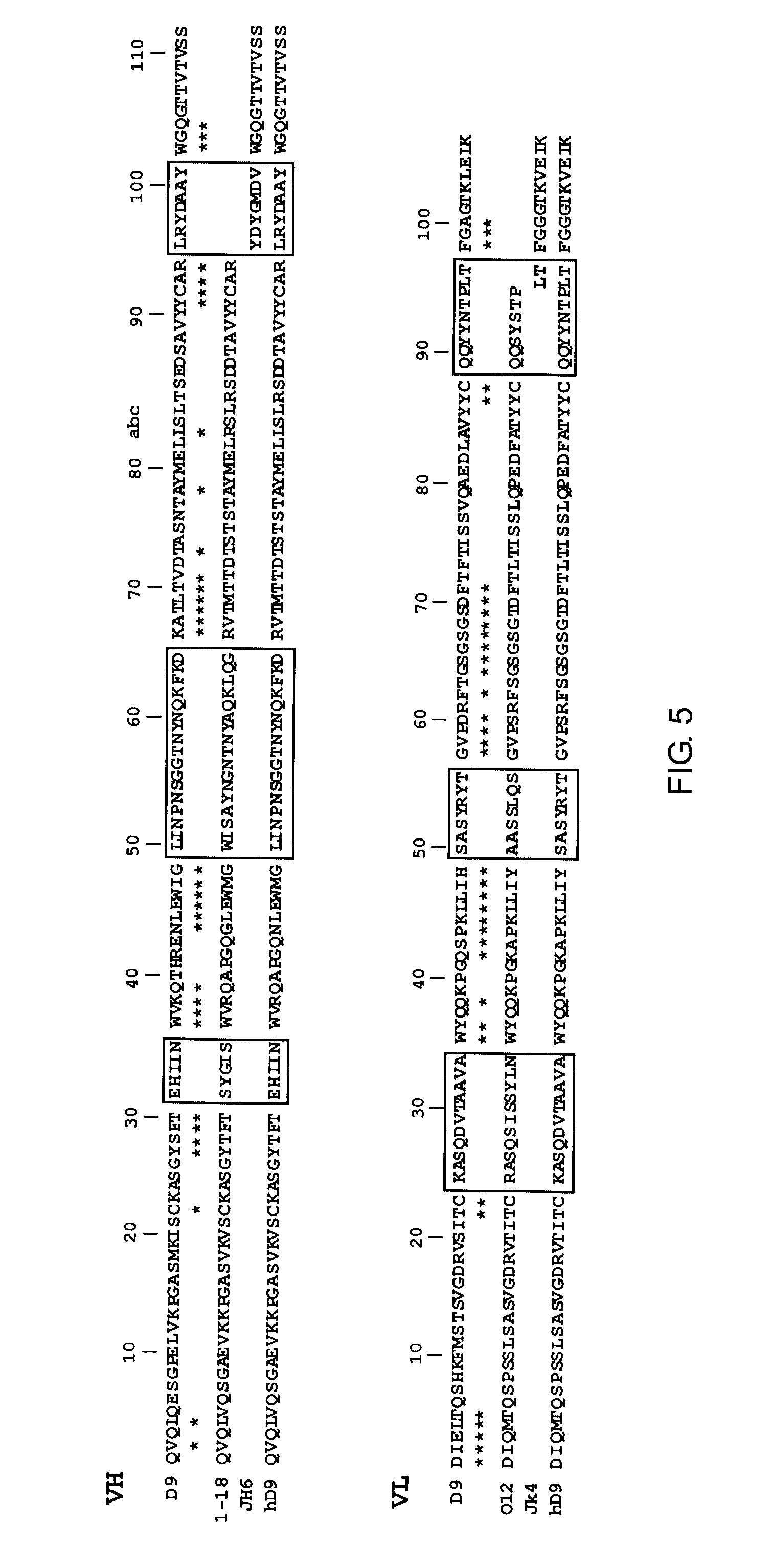Anti-Ricin Antibodies And Uses Thereof
a technology of anti-ricin and antibodies, applied in the field of anti-ricin antibodies, can solve the problems of cell death, no treatment or vaccine available against ricin, and regarded as a high terrorist risk for civilians
- Summary
- Abstract
- Description
- Claims
- Application Information
AI Technical Summary
Benefits of technology
Problems solved by technology
Method used
Image
Examples
example 1
Preparation of Ricin Stock
[0098]Because ricin is a possible terrorist biothreat, it is very difficult to obtain from commercial sources. Castor beans were obtained and working stocks of ricin were prepared. Specifics regarding the source of castor beans and preparation of the ricin stock cannot be disclosed due to security issues.
[0099]Ricin was prepared from castor bean seeds in Defense Research and Development Canada-Suffield. The toxicity of ricin stock was also determined. One LD50 of ricin for mice was determined by the i.p. injection of a series of ricin dilution into mice. The mice were observed for 7 days. The amount of ricin for 1×LD50 delivered by the i.p. route for one 20-25 gram female Balb / c mouse was 0.215 μg; 5×LD50 was 1.075 μg, or about 1 μg. For 5×LD50 of ricin delivered by the i.p. route, mice died within 1-2 days.
example 2
Creation and Selection of Hybridoma
[0100]Mice were used to obtain antibody hybridoma. The mice are kept in a secure BSL-2 area, cared for under the Canadian Council on Animal Care (CCAC) guidelines, and assessed for alternative endpoints.
[0101]Groups of 5 BALB / c female mice were injected i.p. with increasing amounts of ricin (0.2, 1.0, 5 and 25×LD50) from Example 1 in 0.1 ml sterile 0.9% saline per mouse. Depending on their recovery (weight gain, a lack of illness symptoms), injections of increasing ricin amounts were 2-3 weeks apart. Two weeks after the final dose, the mice were bled by nicking the tail vein with a scalpel while the mouse was in a restraint chamber; blood was collected into a sterile micro centrifuge tube and allowed to clot at room temperature for 30 min. The sample was then centrifuging at 2300×g for 5 min and the serum was collected; if required, the serum was stored at −20° C. until needed.
[0102]ELISA was performed to determine anti-ricin IgG antibody titres. N...
example 3
Antibody Purification and Characterization
[0105]The four hybridoma clones of Example 2 were cultured and the expressed antibodies were purified and characterized.
[0106]Hybridoma clones A9, B10, D3, and D9 were separately cultured in DMEM supplemented with 10% FBS. Monoclonal antibodies (mAb) were purified from the cell culture supernatants by Melon Gel purification (Melon Gel Monoclonal IgG Purification Kit, Pierce, Rockford, Ill.) according to the manufacturer's protocol. The supernatant was dialyzed for two 1 hr exchanges in Melon Gel IgG Purification Buffer pH 7.0 and was loaded onto a column containing the Melon Gel resin. After 5 minute incubation with end-over-end mixing, the purified IgG was collected in the flow-through fraction. All IgG purified samples were aliquoted and stored at minus 20° C. The purity of the mAb was 85-90%, as assessed by SDS-PAGE (data not shown).
[0107]The purified mAb were also isotyped using a mouse IsoStrip™ Kit. All the mAb showed the same subtype ...
PUM
| Property | Measurement | Unit |
|---|---|---|
| concentration | aaaaa | aaaaa |
| concentration | aaaaa | aaaaa |
| concentration | aaaaa | aaaaa |
Abstract
Description
Claims
Application Information
 Login to View More
Login to View More - R&D
- Intellectual Property
- Life Sciences
- Materials
- Tech Scout
- Unparalleled Data Quality
- Higher Quality Content
- 60% Fewer Hallucinations
Browse by: Latest US Patents, China's latest patents, Technical Efficacy Thesaurus, Application Domain, Technology Topic, Popular Technical Reports.
© 2025 PatSnap. All rights reserved.Legal|Privacy policy|Modern Slavery Act Transparency Statement|Sitemap|About US| Contact US: help@patsnap.com



